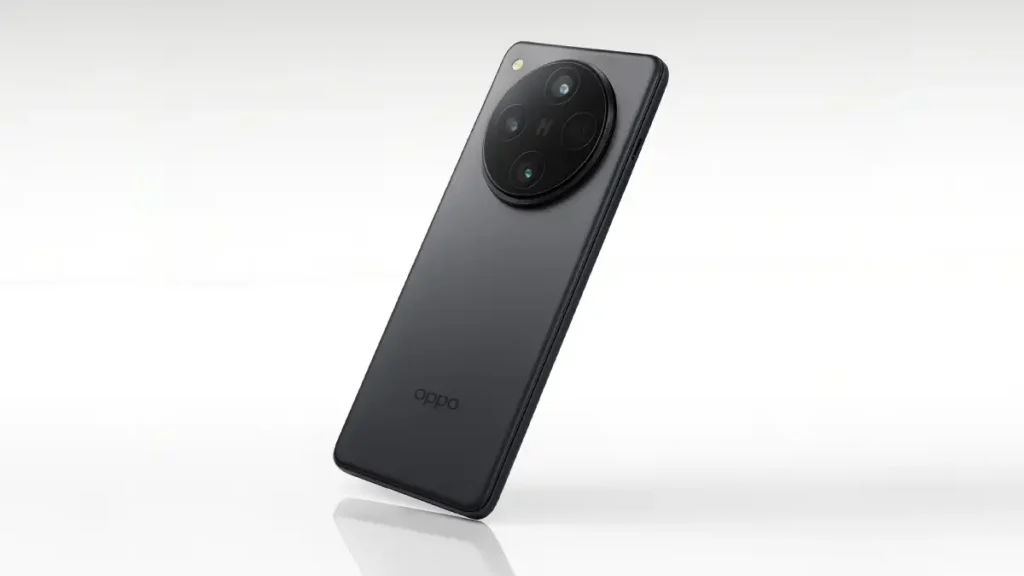From the outside, the Oppo Find X9 Pro looks like another maxed-out Android flagship, but its real story is how Oppo is stitching together a new system architecture: a 7,500mAh class battery pushing endurance norms, a single 200MP periscope rethinking tele systems, a Hasselblad magnetic imaging kit that pushes pro accessories into the mainstream, and a MediaTek flagship SoC signaling a pragmatic shift in performance-per-watt economics. Each choice touches multiple industries—from optics and materials to wireless standards and retail bundles—and hints at how 2026-era flagships might be built.

Battery as a strategic axis
Oppo has pre-teased the Find X9 Pro with a significantly larger battery, a clear departure from the 5,000–5,500mAh norm and a signal that all-day-plus endurance and accessory headroom (for camera grips) are core use cases, not afterthoughts. Reports suggest fast wired and wireless charging, which reframes battery size from a trade-off to a platform—big tank, fast refuels, and accessory resiliency during intense imaging sessions. Expect downstream effects: thicker device allowances across premium tiers, cooling redesigns around charge thermals, and a renewed push for high-cycle longevity chemistries tuned for quick top-ups rather than deep daily drains.
Imaging goes modular, not just computational
Two moves stand out: a high-resolution 200MP periscope telephoto and an optional, magnetically attached Hasselblad imaging kit that snaps on faster than traditional grips. The 200MP module consolidates what used to be dual-tele stacks into one high-resolution periscope, leaning on pixel binning and AI fusion to cover multiple focal lengths while simplifying BOM and tuning complexity. The magnetic Hasselblad kit extends optics and ergonomics without committing the base phone to permanent bulk, a model with implications for aftermarket ecosystems and retail upsells. If the kit meaningfully extends equivalent focal lengths and stabilizes grip-based shooting, it could shift enthusiasts from carrying compact cameras to phone-plus-grip rigs as a default.
Silicon signals: why MediaTek here matters
Multiple leaks point to MediaTek’s latest Dimensity flagship powering the Find X9 Pro, positioning Oppo to optimize performance-per-watt for long sessions, especially camera and 5G workloads tied to that large battery. In practice, that means a silicon + energy co-design: the SoC’s sustained efficiency paired with the large cell and LTPO display can deliver more usable hours in camera, maps, or creator workflows, which in turn supports the accessory narrative. A MediaTek flagship also pressures Qualcomm on pricing and availability, with second-order effects on component sourcing and schedule risk in a high-volume global launch.
Display and durability: flat, thin-bezel practicality
Expect extremely thin bezels and a flat display, a swing back from aggressive curves that often complicate case design and touch rejection. A flatter, symmetrical panel benefits mounting, magnetic accessories, and screen protectors—small details that matter when a camera kit is a strategic pillar. Likely panel specs sit around the 6.8-inch class with high-refresh LTPO OLED, the sweet spot where UI fluidity meets endurance when paired with adaptive refresh, again harmonizing with the large-cell thesis.
The accessory economy as a moat
Hasselblad co-branding has been an image-tuning story for years, but selling an official magnetic camera kit for the Pro elevates it to an ecosystem play. This opens recurring revenue via first-party optics and grips, but just as importantly, primes third-party makers to build compatible add-ons, much like the MagSafe halo on iPhones, only targeted at imaging enthusiasts. Expect bundles, creator edition SKUs, and seasonal accessories that extend lifecycle interest beyond the initial launch window.
Network and endurance: creators and commuters
A large-battery device with high-efficiency silicon and 5G is not just “bigger number” marketing; it meaningfully changes travel and field workflows for creators shooting long form or high-frequency tele use. With fast wired and wireless refuels, the device can bounce between grip-on shooting and desk charging without deep-cycle fatigue, reducing battery anxiety during event coverage or multi-day trips. If Oppo pairs this with optimized thermal envelopes during video capture, it could challenge rivals that throttle in extended 4K/8K sessions, especially when accessory grip mass helps passive dissipation.
Competitive framing: the single-tele rethink
The 200MP tele trend suggests a consolidation of telephoto stacks, where one high-res periscope covers multiple roles through oversampling and smart cropping. That simplifies module count and can improve tuning predictability across zoom stops, with AI helping bridge the gaps in mid-tele ranges. Oppo’s bet is that the 200MP periscope, plus optional optics, beats dual-tele complexity for its users while leaving space for future kit upgrades that extend reach or improve macro/portrait rendering.
Launch timing and go-to-market
Official teases indicate an imminent launch window, with a likely China-first debut followed by broader availability. Pre-launch communication has emphasized battery size, display bezels, and the Hasselblad kit, signaling the priorities Oppo wants consumers—and reviewers—to test first. Expect India and other key markets shortly after, with pricing rumored to track prior Pro tiers while accessory bundles create tiered value perception.
Risks and what to watch
- Weight and ergonomics: a larger battery plus pro-grade glass and camera hardware risks pushing overall mass higher; watch the final thickness and grams.
- Thermal sustain: long televideo and 5G use in hot climates will test the efficiency story beyond benchmarks and short reviews.
- Accessory execution: magnetic strength, latency in shutter controls, and optical quality will determine if the Hasselblad kit is a must-have or a novelty.
Why this phone matters
The Find X9 Pro is a system-level hypothesis: endurance-first energy design, consolidated tele imaging elevated by optional optics, and a silicon choice that favors sustained efficiency over peak glory. If the bet pays off, expect next-wave flagships to normalize larger batteries, modular camera ecosystems, and flatter, accessory-friendly hardware—much as magnetic accessory standards reshaped peripherals on other platforms.




